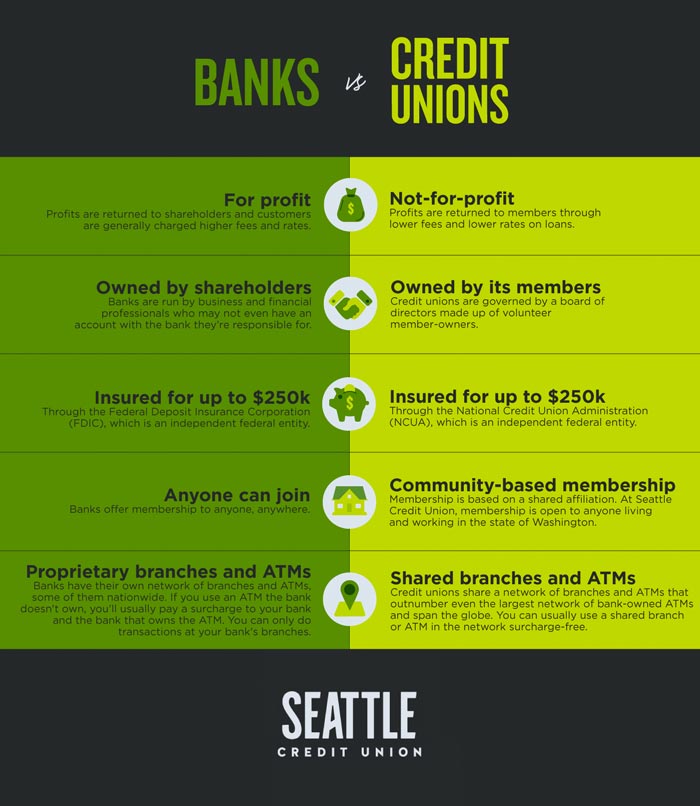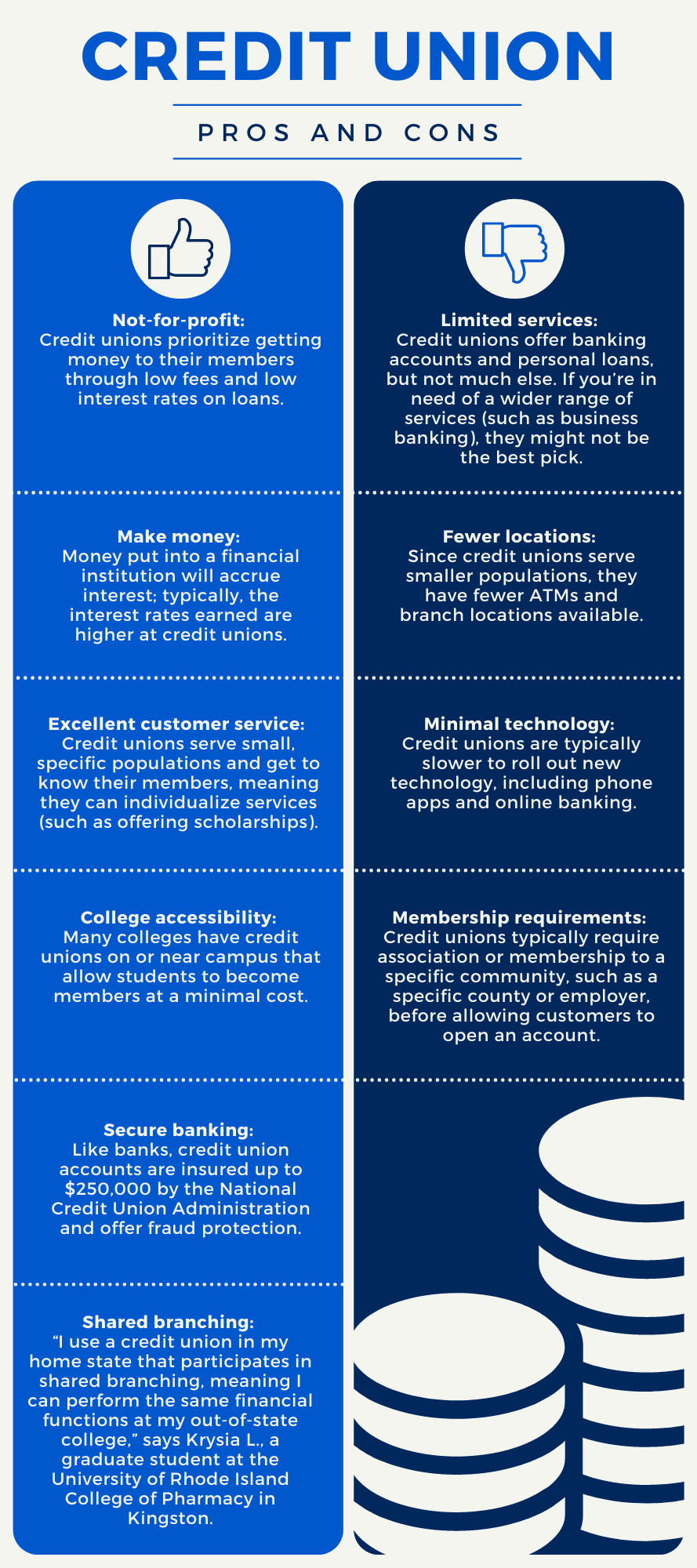Discover Top Credit Unions in Wyoming: Your Overview to Financial Providers
Discover Top Credit Unions in Wyoming: Your Overview to Financial Providers
Blog Article
The Ultimate Overview to Recognizing Lending Institution

Credit scores unions stand as one-of-a-kind financial entities, rooted in concepts of mutual support and member-driven procedures. As we browse via the intricacies of debt unions, an informative trip awaits to lose light on these member-focused establishments and how they differ from conventional banks.
What Are Credit Unions?
Lending institution are member-owned banks that use a series of financial services to their members. Unlike typical financial institutions, lending institution operate as not-for-profit companies, suggesting their primary focus gets on offering their members instead of taking full advantage of profits. Members of a credit rating union usually share a typical bond, such as helping the very same company, belonging to the same area, or becoming part of the exact same company.
One of the essential advantages of cooperative credit union is that they typically supply higher rates of interest on financial savings accounts and lower rates of interest on lendings compared to banks. Credit Unions in Wyoming. This is since credit unions are structured to benefit their members straight, allowing them to pass on their profits in the type of much better prices and fewer fees. Furthermore, cooperative credit union are known for their personalized client service, as they focus on developing relationships with their members to understand their special monetary requirements and goals
History and Evolution of Credit Score Unions
The roots of member-owned economic cooperatives, recognized today as cooperative credit union, trace back to a time when communities sought options to standard banking institutions. The concept of cooperative credit union come from the 19th century in Europe, with Friedrich Wilhelm Raiffeisen usually attributed as the pioneer of the cooperative financial motion. Raiffeisen started the initial acknowledged lending institution in Germany in the mid-1800s, highlighting community assistance and self-help principles.
The advancement of credit unions proceeded in North America, where Alphonse Desjardins developed the very first cooperative credit union in copyright in 1900. Soon after, in 1909, the first U.S. cooperative credit union was formed in New Hampshire by a group of Franco-American immigrants. These early lending institution operated the basic concepts of shared assistance, autonomous control, and member possession.
Gradually, lending institution have expanded in appeal worldwide because of their not-for-profit framework, concentrate on offering members, and providing affordable financial products and services. Today, credit history unions play an important role in the monetary sector, providing easily accessible and community-oriented banking options for people and services alike.

Subscription and Qualification Criteria
Subscription at a cooperative credit union is typically restricted to people meeting details eligibility standards based on the organization's founding principles and governing requirements. These criteria commonly include elements such as geographical location, employment condition, subscription in certain organizations, or association with details groups. Lending institution are recognized for their community-oriented approach, which is shown in their subscription needs. Federal Credit Union. Some credit history unions might only serve individuals who work or live in a particular area, while others may be tailored to staff members of a specific business or participants of a certain organization.
In addition, cooperative credit union are structured as not-for-profit companies, suggesting that their key objective is to serve their members instead than produce profits for investors. This concentrate on participant service frequently translates right into more customized focus, lower fees, and affordable rates of interest on cost savings and car loans accounts. By meeting the eligibility requirements and becoming a participant of a lending institution, individuals can access a range of monetary services and products customized to their specific needs.
Solutions and Products Offered
One of the crucial aspects that sets debt unions apart is the diverse variety of financial product and services they use to their members. Cooperative credit union normally provide conventional financial solutions such as savings and inspecting accounts, lendings, and credit score cards. Participants can additionally gain from financial investment services, including retirement accounts and monetary planning support. Lots of lending institution use affordable rate of interest on financial savings accounts and loans, as well as lower fees compared to traditional banks.
Additionally, lending institution often give hassle-free online and mobile banking options for participants to conveniently manage their finances. They might use benefits such as common branching, enabling members to access their accounts at various other credit report unions across the nation. Some credit score unions likewise provide insurance coverage items like home, life, and vehicle insurance coverage to help members shield their assets and liked ones.

Advantages of Financial With Cooperative Credit Union
When taking into consideration economic institutions, discovering the benefits of banking with credit scores unions exposes special advantages for participants seeking tailored solution and affordable rates. Unlike big financial institutions, credit rating unions are member-owned and prioritize structure solid partnerships with their participants. Generally, financial with a credit scores union can offer a more personalized, affordable, and member-centric financial experience.
Conclusion
In verdict, credit unions stick out as member-owned banks that prioritize serving their members over making best use of revenues. With beginnings dating back to 19th century Europe, lending institution comply with concepts of common aid and member possession. They offer a series of economic product and services, consisting of conventional financial solutions, financial investment options, and affordable rates of interest. Membership eligibility standards specify and show a community-oriented approach, providing individualized consumer service and a member-centric monetary experience.
Credit unions are member-owned financial establishments that use a range of financial solutions to their members. The concept of credit unions come from in the 19th century see in Europe, with Friedrich Wilhelm Raiffeisen often credited as the pioneer of the cooperative banking motion.The advancement of credit unions continued in North America, where Alphonse Desjardins developed the first credit union in copyright in 1900. Credit unions usually supply typical financial services such as savings and inspecting accounts, fundings, and debt about his cards.When considering monetary establishments, checking out the advantages of banking with debt unions reveals unique benefits for members seeking customized solution and affordable prices.
Report this page